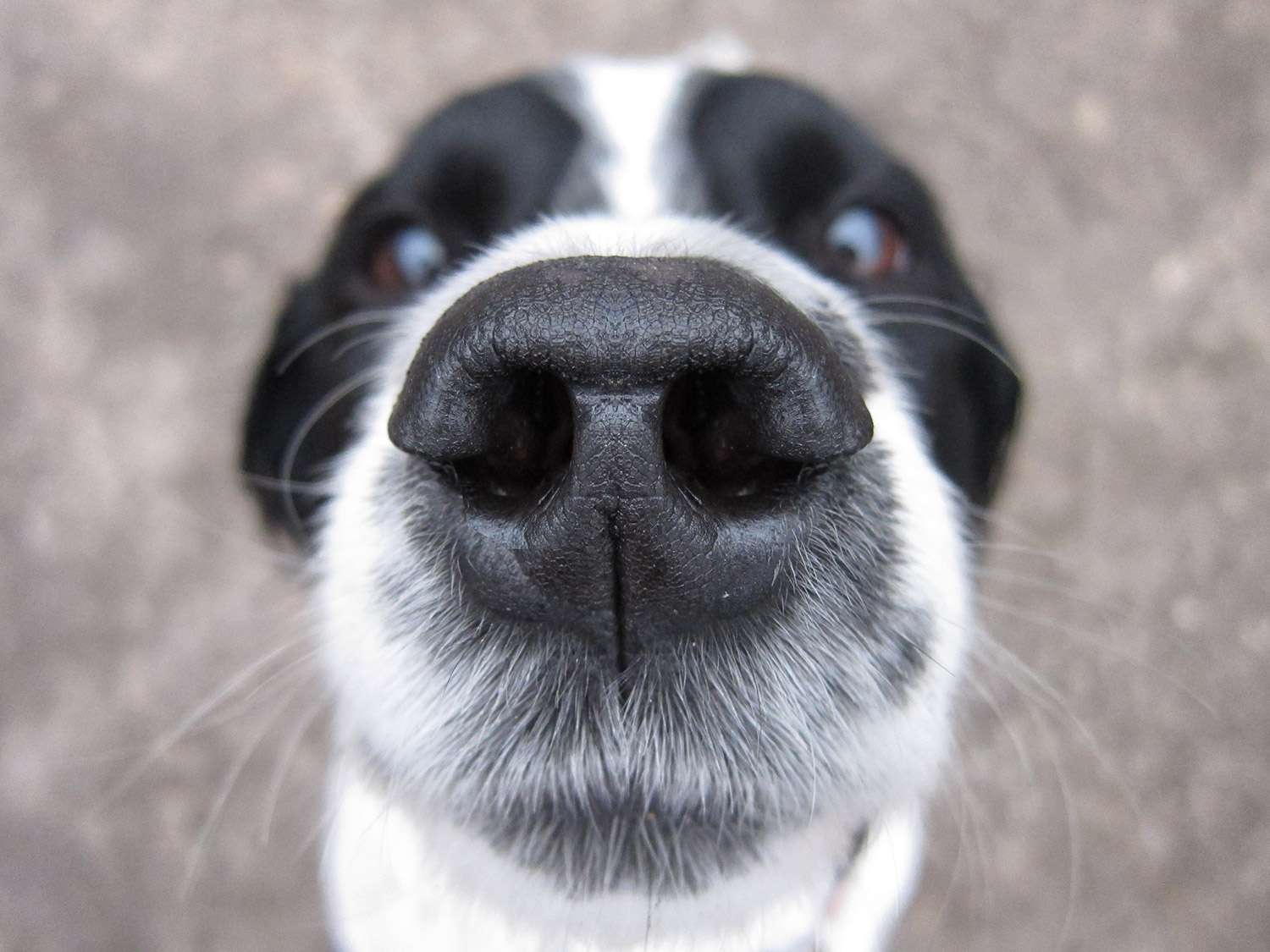
Breed Differences
All dogs have excellent olfactory capabilities, but some are better than others. The brachycephalic, otherwise known as short-nosed breeds, just don’t have the same long nose as other breeds. Among breeds with short noses include:
Taking Care of Your Dog’s Nose
It’s pretty clear that your dog’s nose is an incredibly valuable organ, and as such, it requires lots of tender loving care. Thus, if you notice any of the following, contact your vet right away.
The Nose Knows

Fact #1: In addition to its amazing smelling function, a dog’s nose is also his breathing mechanism. Fact #2: Dogs’ ability to smell is 100,000 times greater than that of humans. Fact #3: Dogs can tell when and where things happen through their noses. Fact #4: Some breeds do not smell as well as other breeds. Fact #5: What dogs can do with their noses is incredible!
Dog Noses Have a Greater Smelling Capacity
Here’s why dogs have such exquisite smelling abilities. Their noses have 300 million olfactory receptors while their human friends (us) have just 5 million receptors. Dogs also have a “second nose” which is located near the roof of the mouth. This organ transmits different signals to the brain, resulting in a keen sense for finding mates as well as for puppies in finding the source of their mother’s milk. In addition, would you believe that a dog’s brain handles olfactory signals 40 times that of the same function in the human brain?
Double Duty: Smelling and Breathing
That’s right. A dog’s nose can perform the amazing duty of breathing in, out, and smelling at the same time. Here’s how a dog’s nose works. The nasal system opens into the two nostrils which are the openings to two chambers that take in smells separately. The particles originated by the smells become trapped in the mucus in the nose. These are then dealt with by the receptors which then send identifying messages to the brain. While this is happening, some of the inhaled air goes to the dog’s lungs, allowing him to breathe. As the dog breathes out, new odors enter the nose, and the processing procedure begins again.
The Incredible Things Dogs Can Do with Their Nose
These are just a few of the things you may or may not know that dogs can do with their noses. Some of these things are the result of training and some are not. 1. Dogs can detect human illnesses such as cancer. 2. Dogs can warn people of impending seizures. 3. Dogs keep owners safe by warning them of dangers such as fire and intruders. 4. In Italy, the Lagotto Romagnolo dog breed is used to sniff out valuable truffles. 5. Light, skin-colored noses are less preferred in breeding circles for several reasons, including that they are more prone to sunburn than black noses. 6. Every day when he goes out for his walk, a dog is bombarded with a huge array of new odors, which become his “smellscape.” 7. Dogs can identify a single drop of a liquid in 20 Olympic-size (2500 ft3) swimming pools! 8. Dogs are happiest when their noses go to work. 9. Dogs are often used for police work, including sniffing out illegal drugs, weapons, and bombs. 10. During thunderstorms, in addition to the noise, the main reason dogs become frightened is because of the smell of metal that is the result of the storm’s electricity which releases ions into the air.
